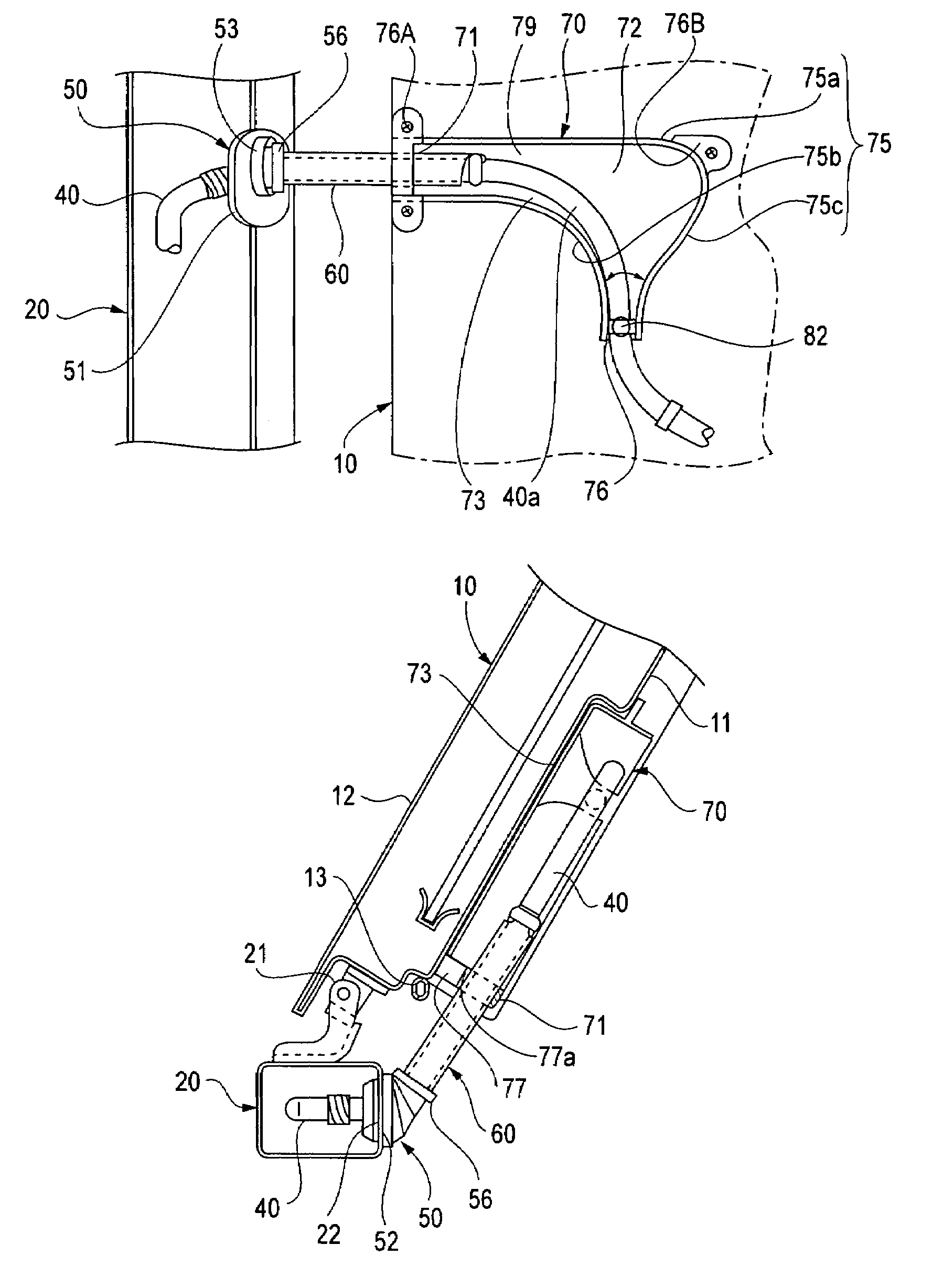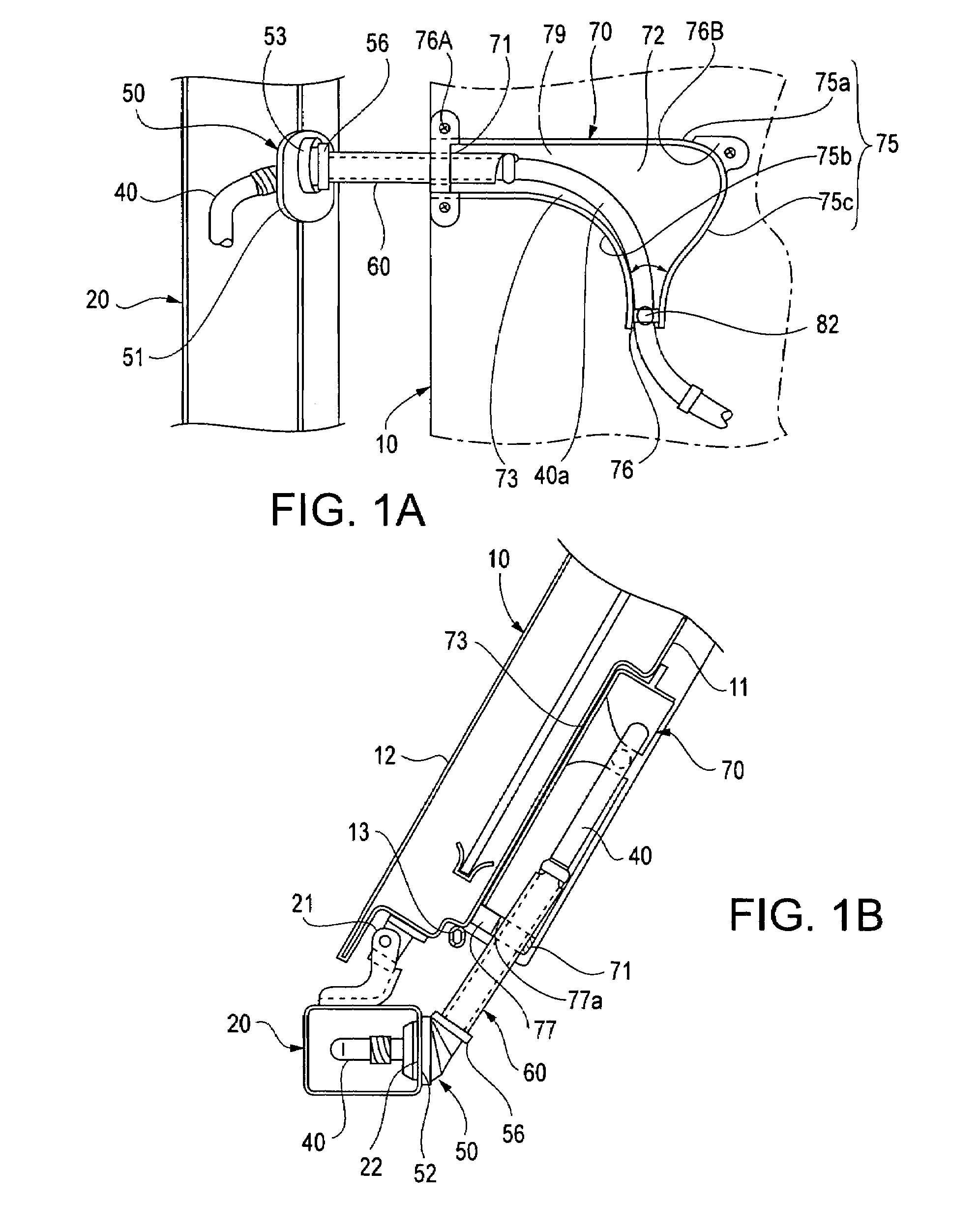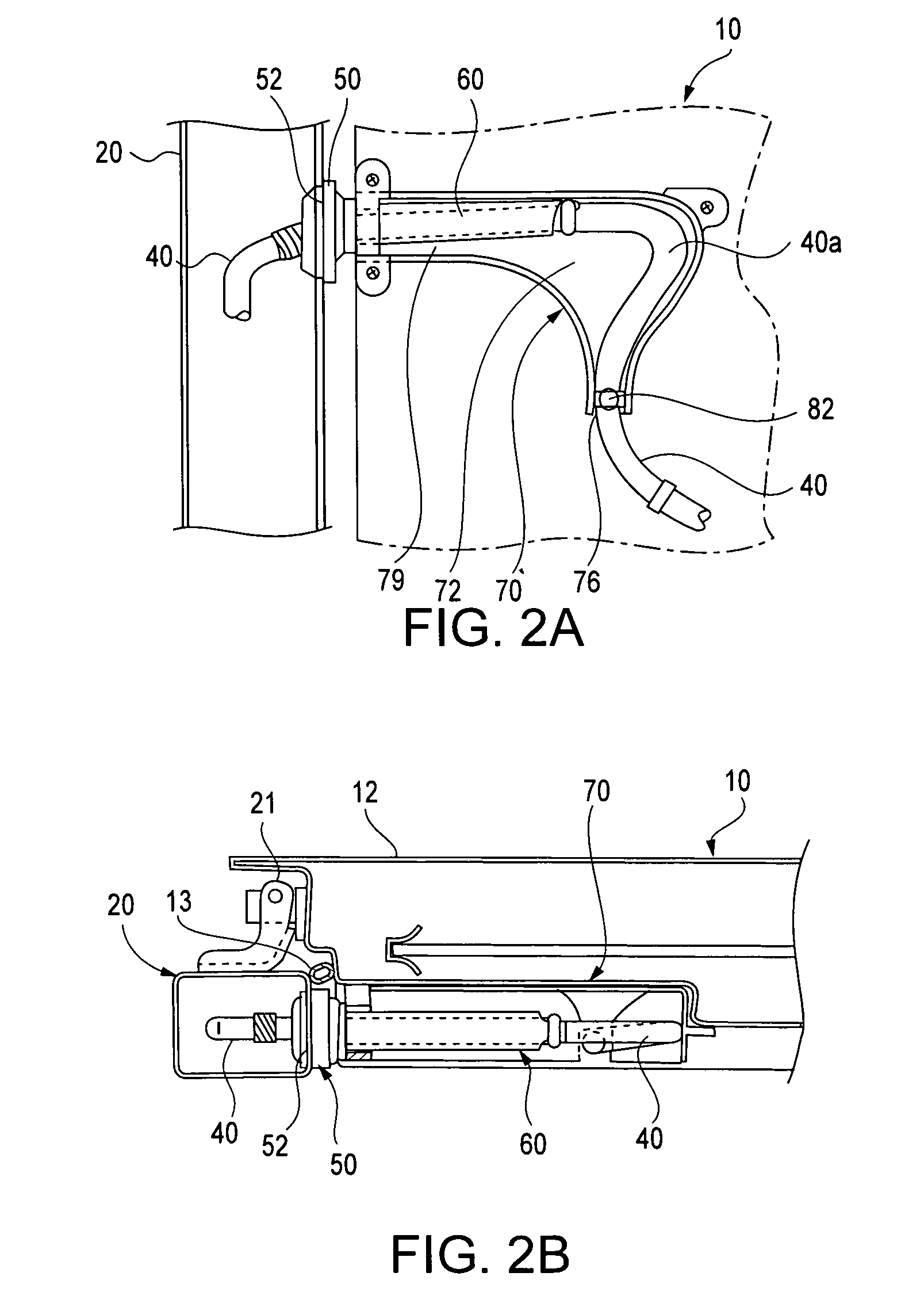Wire harness construction
a wire harness and construction technology, applied in the direction of insulated conductors, cables, conductors, etc., can solve the problems of low rigidity of wire harnesses, difficult operation of apertures, and inability to pull wire harnesses into space, and achieve smooth deformation, smooth bend, and successful protection of wire harnesses
- Summary
- Abstract
- Description
- Claims
- Application Information
AI Technical Summary
Benefits of technology
Problems solved by technology
Method used
Image
Examples
first embodiment
[0079]The embodiments of the present invention are explained in detail in the following in reference to the above-described drawings. FIGS. 1 through 6 illustrate the present invention. Wire harness (i.e., door harness) 40 mounted on side door 10 (hereinafter referred to as door 10) extends to body 20 of a vehicle. FIGS. 1A and 1B illustrate door 10 in an open position and FIGS. 2A and 2B illustrate door 10 in a closed position.
[0080]Outer panel 12 and inner panel 11 are connected on door 10. Protector 70 is provided on the passenger compartment side of the door 10 toward the body side of inner panel 11. Protector 70 may be formed of any suitable material such as, for example, a resin material; and protector 70 may be fixed on the passenger compartment side of the door 10. A door trim (no figure) is also attached to inner panel 11. On door 10, a body side end face of inner panel 11 is connected to body 20 by hinge 21. Door 10 is thus rotatably connected around hinge 21.
[0081]Wire ha...
third embodiment
[0095]FIG. 11 illustrates the present invention. Clamp 182 may be formed integrally and in one piece of any suitable material such as, for example, an elastic resin. Band 182a is formed of two halves, an upper half and a lower half, which may be opened and closed. Connecting portion 182h forms a thin formed hinge; and an upper half of band 182a is configured to rotate around connecting portion 182h. Male and female hook portions 182g and 182f, respectively, may be connected by mating with each other, sandwiching wire harness 40 therebetween. As a result, an easy assembly of wire harness 40 may be achieved. 182j indicates a spacer that has a thin planar shape facing downward and has a spring force; 182j absorbs margins of manufacturing error of protector 70 and clamp 182, eliminating backlash between clamp 182 and protector 70, while avoiding fixation in a rotating direction. Spacer 182j serves as a spacer that keeps a predetermined distance between wire harness 40 and a wall of prot...
fourth embodiment
[0096]FIGS. 12A, 12B, 13A, 13B, 14-16, 17A, 17B, and 17C illustrate the present invention. Wire harness 40 is mounted within inner panel 111 and its ends are connected to predetermined electronic components via connectors (not shown) attached to its ends. Wire harness 40 passes through a passenger compartment side of inner panel 111 and has protector 160 attached to a side where wire harness 40 is pulled out toward body 20. Wire harness 40 has grommet 50 fixed onto one end. Wire harness 40 having protector 160 and grommet 50 attached is pulled out from a point closer to the passenger compartment side than the weather strip on the body side surface of inner panel 111, and grommet 50 is fixedly inserted into attachment hole 22 of body 20.
[0097]As shown in FIG. 14, protector 160 connects a bendable caterpillar-shaped protector 161 to straight tubular protector 162 in a longitudinal direction. Protector 160 may formed integrally and in one piece; and protector 160 may formed of any suit...
PUM
| Property | Measurement | Unit |
|---|---|---|
| length | aaaaa | aaaaa |
| diameter | aaaaa | aaaaa |
| elastic | aaaaa | aaaaa |
Abstract
Description
Claims
Application Information
 Login to View More
Login to View More - R&D
- Intellectual Property
- Life Sciences
- Materials
- Tech Scout
- Unparalleled Data Quality
- Higher Quality Content
- 60% Fewer Hallucinations
Browse by: Latest US Patents, China's latest patents, Technical Efficacy Thesaurus, Application Domain, Technology Topic, Popular Technical Reports.
© 2025 PatSnap. All rights reserved.Legal|Privacy policy|Modern Slavery Act Transparency Statement|Sitemap|About US| Contact US: help@patsnap.com



